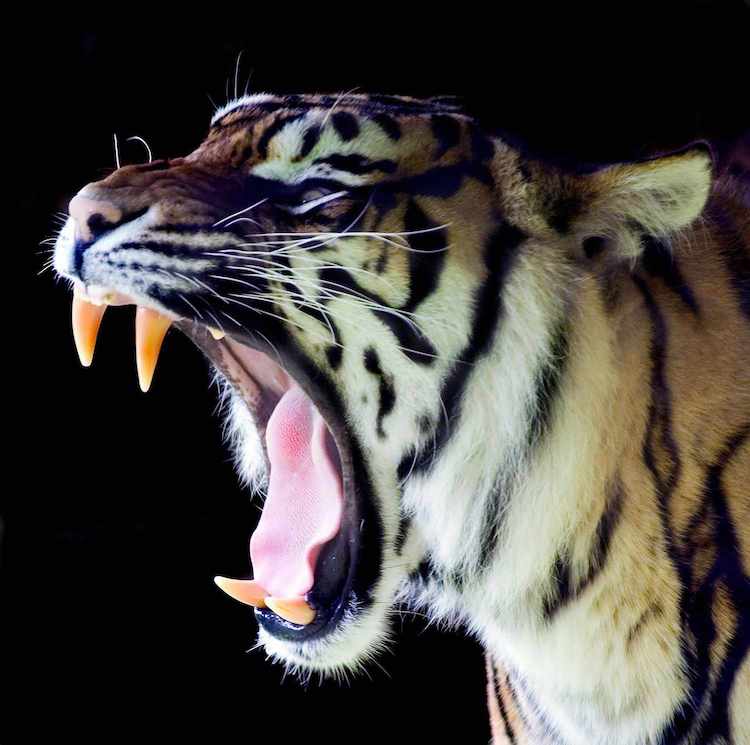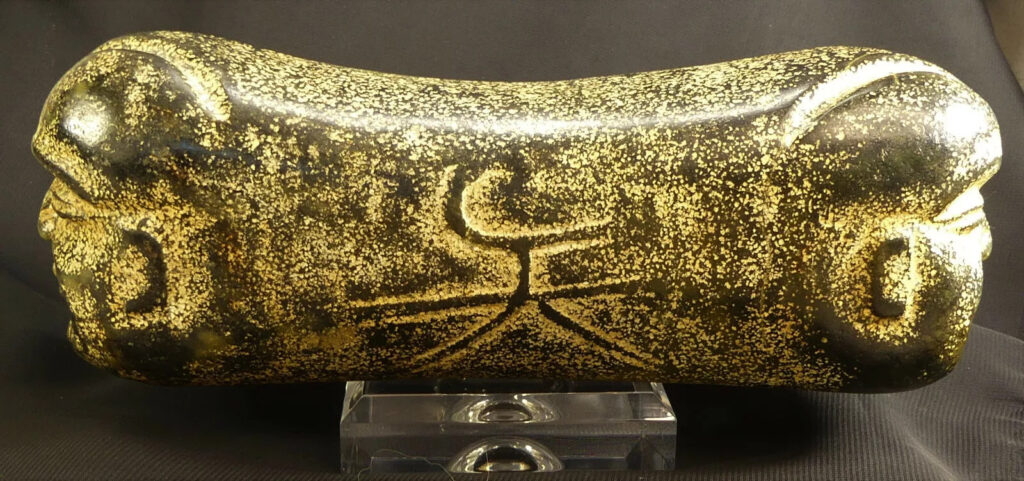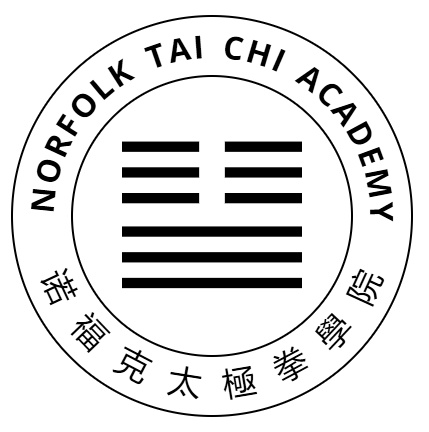Acupuncture is well known and popular in the Western world. Underlying this system is the concept of an energy body. Whilst in the west we take a very material view of the body as made of tissues (bones, flesh and blood), which leads to a mechanical and instrumental attitude to the body, eastern traditions emphasise that the body is also energy. The “energy body” has a number of layers. In India they emphasise the chakras, large fields of energy. Whilst the Chinese are aware of these, they also pay a lot of attention to the system of meridians: energy pathways running through the body, which they name after the organs they pass through. Along this paths lie points with their own properties and functions, all given poetic names. There are also some points that don’t lie on meridians.
For the taiji player interested in the Chinese view of the body it’s not necessary to learn the meridians: we can begin by learning a few points on these meridians that are useful for our practice. Taiji players sometimes have slight differences with practitioners of Chinese medicine about the precise location of these points.
The centre of the palm: Láo Gōng
In the centre of the palm is a cavity: when we push with the palm of the hand, the force of that push is centred here. It’s where the hand does it’s work, 宮, and thus it’s called 勞宮: the House of Work or, if you are more poetically minded, the Palace of Toil. In acupuncture it is PC8 (Pericardium 8. The pericardium is the sac that encases and protects the heart. For this reason, it’s also known as the ‘Heart Protector’ meridian).
The Tiger’s Mouth

When taijí is used martially the hands grab, but when we are playing our taijí the hands are opened so that there is space between all the fingers. Especially important is the gap between the thumb and the forefinger, which is called the Tiger’s Mouth 虎口. Just think about the way a tiger opens it’s jaws wide – before it roars, or perhaps just before it snaps them shut! – and you’ll immediately understand how we are to use this part of the hand in the Taoist arts. This space must be opened wide. Taijí players believe that opening the Tiger’s Mouth activates the Láo Gong, connecting the hand to the rest of the body.
If you gently hold the space between your thumb and forefinger with the thumb and forefinger of the other hand, you may feel something there, and squeezing this point is sometimes promoted as a “hack” for relieving a headache. It’s on the Large Intestine meridian, LI4. (Don’t get confused with the liver meridian).
Fully opening the Tiger’s Mouth will take the thumb a bit forward of the plane of the hand
The Bubbling Spring
The láo gōng in the centre of the palm hand has a ‘mirror’ in the foot: the Bubbling Spring, 虎泉. This is the beginning of the kidney meridian, a place where energy bubbles up into the body from the earth. So where is it exactly? It is again a hollow, but not the one in the centre of the arch: it’s found just behind the ball of the foot. Being a hollow, you can’t make physical contact with the floor with this point. For the taijí player this is an absolutely essential point for finding balance. To be balanced, our centre of gravity must be over our foot – more specifically, over the bubbling spring. Centre the weight there, and one finds that it’s no longer necessary to use the muscles in order to stand up. Instead one magically floats up – but at a speed dictated by the body.
Lost Sleep
If the Bubbling Spring makes energy go up, what makes it come down? Think about how you walk and the answer reveals itself. Stride forward, and whilst the back foot is powering you forward and up through the Bubbling Spring, the front foot goes down and lands on the heel. The centre of this action is at the centre of the heel, a point known as 失眠, which means “lost sleep”. Of course! If energy won’t go down, it gets stuck in the head and we can’t sleep.
Acupuncturists might use this point to treat insomnia.
Hundred Gathering
If the Bubbling Spring is the “bottom” of the energy system, where is the top? It’s at the top of the head, a place where many energy lines converge, hence its name, Hundred Gathering, 百會. This is the highpoint of the pathway that runs up the spine, known as the Governing Vessel or 督脈. Here it meets for example with the Liver meridian.
Now where exactly is the ? Understandings differ. My understanding is that it’s not at the physical high point, but a bit further back – a place we might refer to as the crown (although again that’s not a precise location). We are sometimes told to imagine that the top of the head is suspended from above on a golden thread (“hung from above”). If you attach this thread to the , then as you lift it the head will be pulled slightly back: not back from where it should be, but back to where it should be. In our visual, forward thrusting Western culture, the head is often held a little bit forward, putting enormous strain on the muscles of the neck. Which brings us on to:
Jade Pillow
At the top of the neck lies the jade pillow 玉枕, which is both an area and an acupuncture point (actually a bilateral pair of acupucture points). If you’ve ever used a bolster to support your head rather than a pillow you’ll perhaps understand where this is. A bolster isn’t placed directly under the head, but a bit lower, so that the high point of the bolster is at the hollow where the neck joins the head.
To align the neck nicely, the Jade Pillow must be brought gently back so that the neck better supports the head. Thinking about the Jade Pillow together with the Bai Hui will bring the spine into the correct alignment.
Chinese culture can be a bit austere and some people really did sleep on a pillow made of jade.

